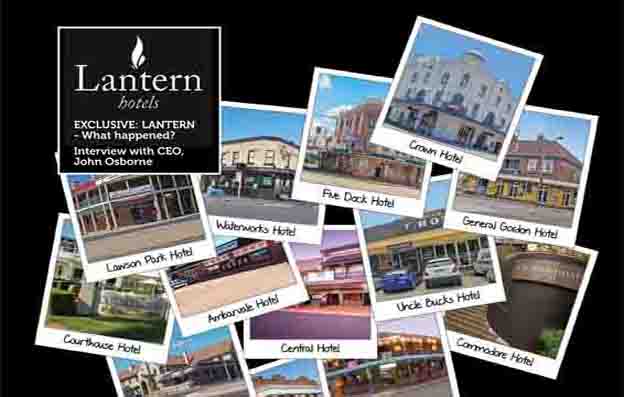
The ASX-listed Lantern Hotel Group recently completed a very public exit from the hotel game. PubTIC spoke with CEO John Osborne about the Group’s problems, the subsequent solution, and those jaw-dropping premiums to book value.
Emerging from a failed pub REIT created by finance giant ING, Lantern became an owner-operator, with around two-dozen pubs and several passive freeholds, throughout four states.
After a few years operation producing poor returns in a post-GFC growth market, the shareholders rose up and dismissed the Board and appointed hotel management specialists John Osborne and Graeme Campbell.
What followed began as a ‘turnaround’ strategy to rescue the company from crippling debt covenants and inadequate operational capital, but gained momentum to become an intriguing sell-down of the entire portfolio.
This process was endorsed by and thoroughly communicated to the shareholders and market via ASX announcements, but Osborne took the time to explain the story between the lines and behind the scenes.
Top priority for the incoming management was to stop haemorrhaging cash. After securing support from major lenders, they set about shedding dead weight.

“The second part was selling the non-core hotels,” said Osborne. “So we looked at the portfolio, and saw there were a whole lot of pubs that were f&b focused, or in regional areas, or don’t have gaming potential. Even if you fully invest in them and run them as well as anybody can, they’re not really the sort of pubs that should be in a big portfolio.
“We identified which ones they were – essentially all except for six, what we called the ‘core’ pubs, and ran a proper public process to sell those. [They] fetched about $70m, at a 14.5 per cent premium to book value.
“The third tranche of the transformation plan was to improve the performance of the core, gaming-led hotels. The first day I went around and looked at our pubs, I thought, if you did nothing else other than make the air-con work, put in new machines, appoint somebody that provides customer service to the gaming patrons, and give them the tools to do that, and keep the place clean and tidy – these places have got to increase by 20-30 per cent without even trying.”
The revised financials allowed LTN to replace two-thirds of the EGMs in the core pubs and execute some minor refurbishments. But faced with how to justify a very admin-heavy company with just six venues, the new Board put it to shareholders, who passed the motion to sell off the remaining pubs too.
Working closely with hotel agents CBRE, Ray White and Manenti Quinlan, the start-to-finish divestment program was executed with surgical precision. In 12 months LTN sold 16 hotels for a total of $206m at an average premium to book value of 34.5 per cent, with the core pubs selling for an average 47 per cent above book value. Ray White Asia-Pacific director, Andrew Jolliffe, says the order and nature of the sales was as important as any advertising done in the campaigns.
“When considering a strategic asset sell-down out of a portfolio of hospitality indexed properties, the sequence, timing and method of sale all play, in equal parts, a very important role in determining the success of the selected process,” explains Jolliffe.
“In considering the many and varied permeations for the Lantern Hotels portfolio once the divestment objective had been set, the situation encouraged us to think not only about the likely pool of buyers for individual properties, but in addition, it was incumbent upon us as to also consider carefully the market message the order of sale would speak to.”
CBRE national director Daniel Dragicevich furthers that the assets’ upsides were specifically promoted in the environs they best suited.
“The Lantern divestment process was successful for a variety reasons, however ultimately driven by the fact the portfolio was made up of quality assets that were already on a strong growth tangent, and also had perceived upside for more hands-on operators.
“Critical to the programme was careful selection of the order of sale, both in terms of not overloading the market, but also in identifying those assets that may have a deeper pool than others, and tailor the timing as such.
“We were lucky to be involved in not just the sale of some of the Sydney assets, but also those located in regional NSW and QLD as well as Perth. A local specialist was employed on each of those occasions to tap in to each geographical market, but also ensure the national audience was aware of the opportunity.”
For the full article, see March PubTIC magazine.

